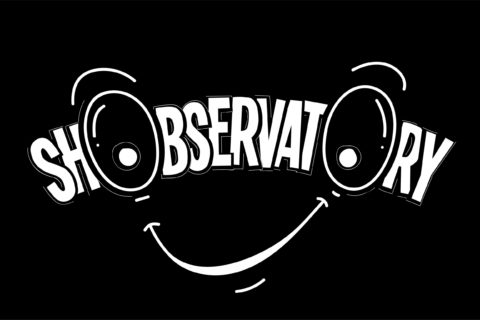Following on from my series on Avoiding the Seven Deadly Sins of Customer Motivation I thought I’d take a post-Halloween look at the “Demons” in our data, and more importantly, how we vanquish them. This first article looks at the common traps (or “demons”) that haunt the unsuspecting insight’s professional seeking to gain and communicate accurate and actionable insights.
The idiom “the devil’s in the detail” has long been used to warn of the “catch” or mysterious element hidden in the details that means things aren’t as simple as they immediately appear. Whilst the phrase is often attributed to the German/American architect Ludwig Mies Van Rohe, interestingly it almost certainly derives from an earlier German proverb – “Der liebe Gott steckt” which translates as “God is in the detail.”
The real challenge in 2020 isn’t whether we have metaphorically “good” or “bad” insights lurking in our data. Moreover, it’s the pure volume, velocity, variety and veracity of data that stops us from seeing the relevant details and actionable insights in the first place. This past year has added more complexity in terms of consumer preferences, attitudes, behaviors, trends and engagements. This complexity has led to the emergence and exacerbation of “demons” in the data. These demons surface with regards to identifying customer trends and tendencies, understanding behaviors and preferences and influencing experiences and engagements.
Managing data has always been a challenge for most organisations. However, the continual shifts and evolving trends related to consumer limitations and periods of isolation has made tracking and understanding individual’s engagements and anticipating the interactions more difficult. However, whilst different data intelligence challenges are emerging, many traditional pitfalls remain and continue to haunt market research, customer experience and marketing strategy teams. These “data demons” have to first be identified and investigated before they can be understood and exorcised.
Identifying the Demons
There’s a wide spectrum of common “demons” that creep into data and haunt its analysis. These can wreak havoc on the extracted intelligence and assembled stories, creating a fog of illusions and threatening to inject distrust in the insight. The following are some of the major demons that organisations should keep a watchful eye out for:
Jekyll & Hyde: Conflicting sources which create an enigma of what to believe. This is often where multiple datasets serve as indicators on a specific customer dimension, but provide conflicting perspectives.
Skeletons: This is outdated data and obsolete intelligence that has no “meat” on the bones. In other words, it provides information on irrelevant aspects of the customer journey that misinform and distract the business.
Zombies: This is mindless, unrepresentative data such as irrelevant sources and small sample sizes. These end up conveying ‘ah ha’ moments that end up lacking substance given the lacking scientific basis. This results in a lack of substance or “meat on the bones” with the information. Too often this can lead to a business stumbling along based on inaccurate insight.
Ghosts: These data gaps are essentially missing key intelligence segments. These cause issues in connecting important elements of insight together and prevent a holistic customer view being assembled.
Vampire: The single enlightening data point that has become obsolete, yet is desperately clung onto, ignoring shifting customer trends and evolutions. This ends up sucking the life out of the efficacy of engagement strategies.
Shadows: These are unorganized data ecosystems and unconnected data sources which force information to be cloaked in dark corners of the organization where it is inaccessible and useless.
Mist: This is the situation of seeing what you want in the data. Too often data is molded to fit the preconceived notions and desired outcomes, which ends up wreaking havoc on what’s actually happening with customers.
Shape Shifters: The data nightmare of misrepresenting information with inconsistent, inaccurate or ever changing or labeling of axes and keys, which leads to incorrect analysis and misplaced understanding of the data.
Uncovering the Demons
It’s critical to take an objective, in-depth look at:
- The sources, processes and procedures built around your data analysis and intelligence capital infrastructure
- The various groups that have ownership of and are responsible for each data source and the subsequent analysis. This aspect alone can create a splintering of the data, fragmenting it so that each dataset, and the resulting insights are isolated from one another.
This not only hinders the ability to democratize intelligence, but also prohibits the ability to assemble a comprehensive customer view along with their individual brand engagements and holistic journey.
Beyond this, auditing the data management process is critical in determining the demons that lie within an organisation’s approach to intelligence. Once identified, these can be addressed and ‘exorcised’ with committed best practices and protocols. However, we’ll address those aspects in the follow-up to this piece.
Simply uncovering these demons which haunt the data intelligence process can be a major task since it sits between data technology, organisational structure, corporate goals, company politics and potentially even personal biases. These dimensions can be challenging to identify, inventory and improve given the wide array of differentiation between each of them. Getting cross-departmental commitment to both review and rectify the issues is a critical step in the process and one that will pay significant dividends to each individual team and the collective organisation.
The good news is that you aren’t alone in dealing with these data demons. Increasingly there are robust tools and advancing technologies that allow for the ingesting, centralization and analysis of complex data sets. These enhanced systems then democratise the findings across the organisation, ensuring that the demons are addressed and evicted from your data management.
In the second part of this series I will review how to exorcise these demons from your data, intelligence, insights, processes, procedures, analysis and ownership.


